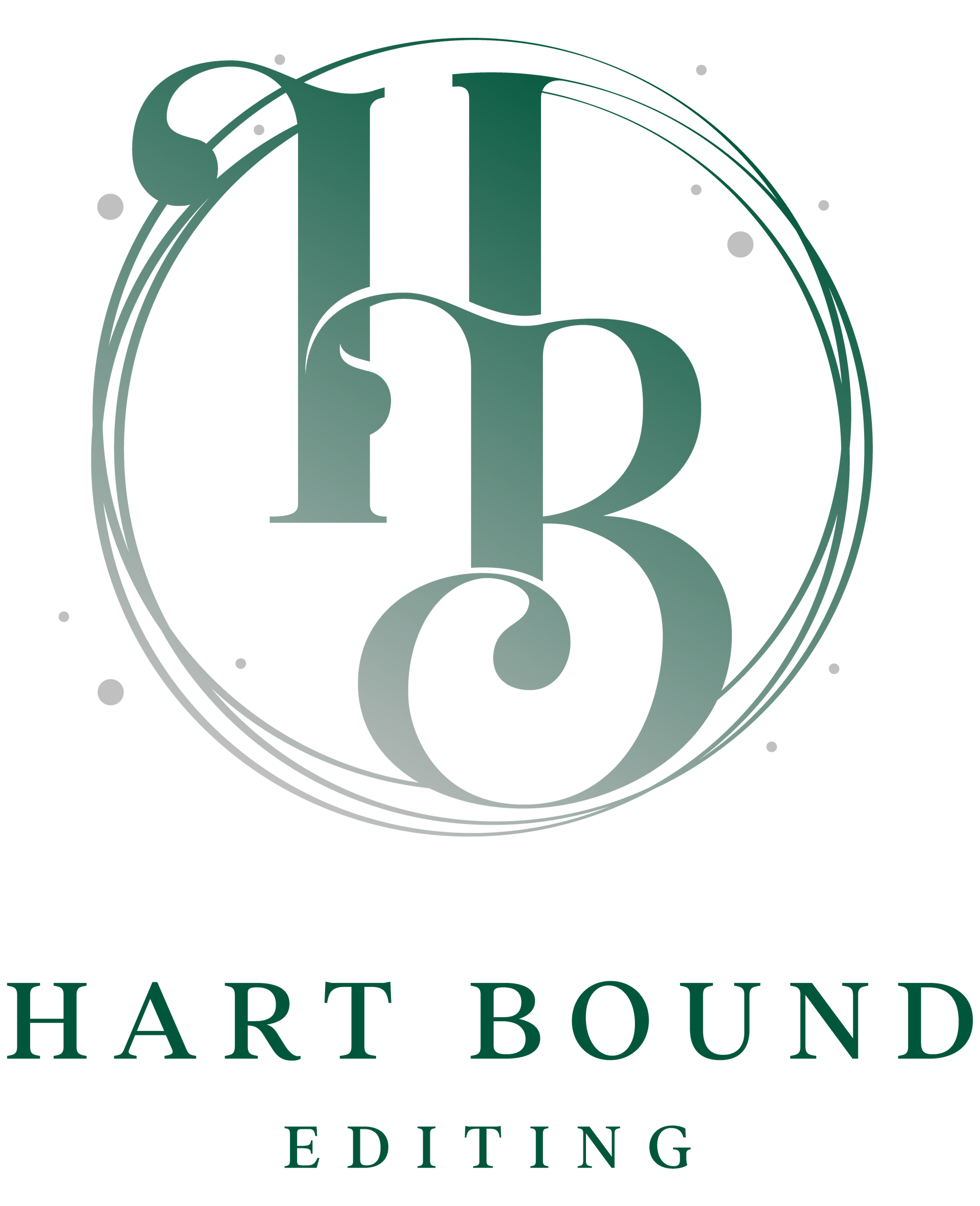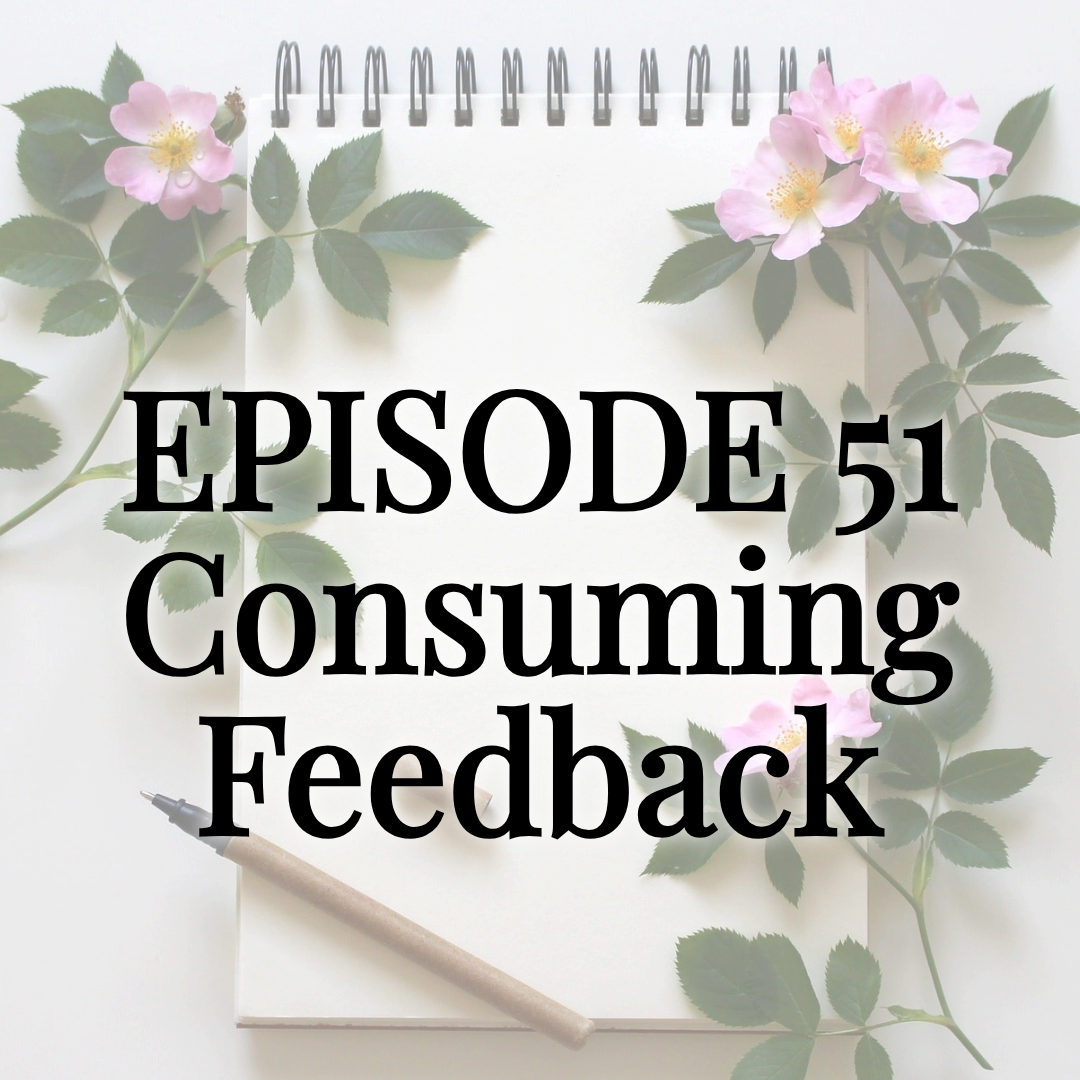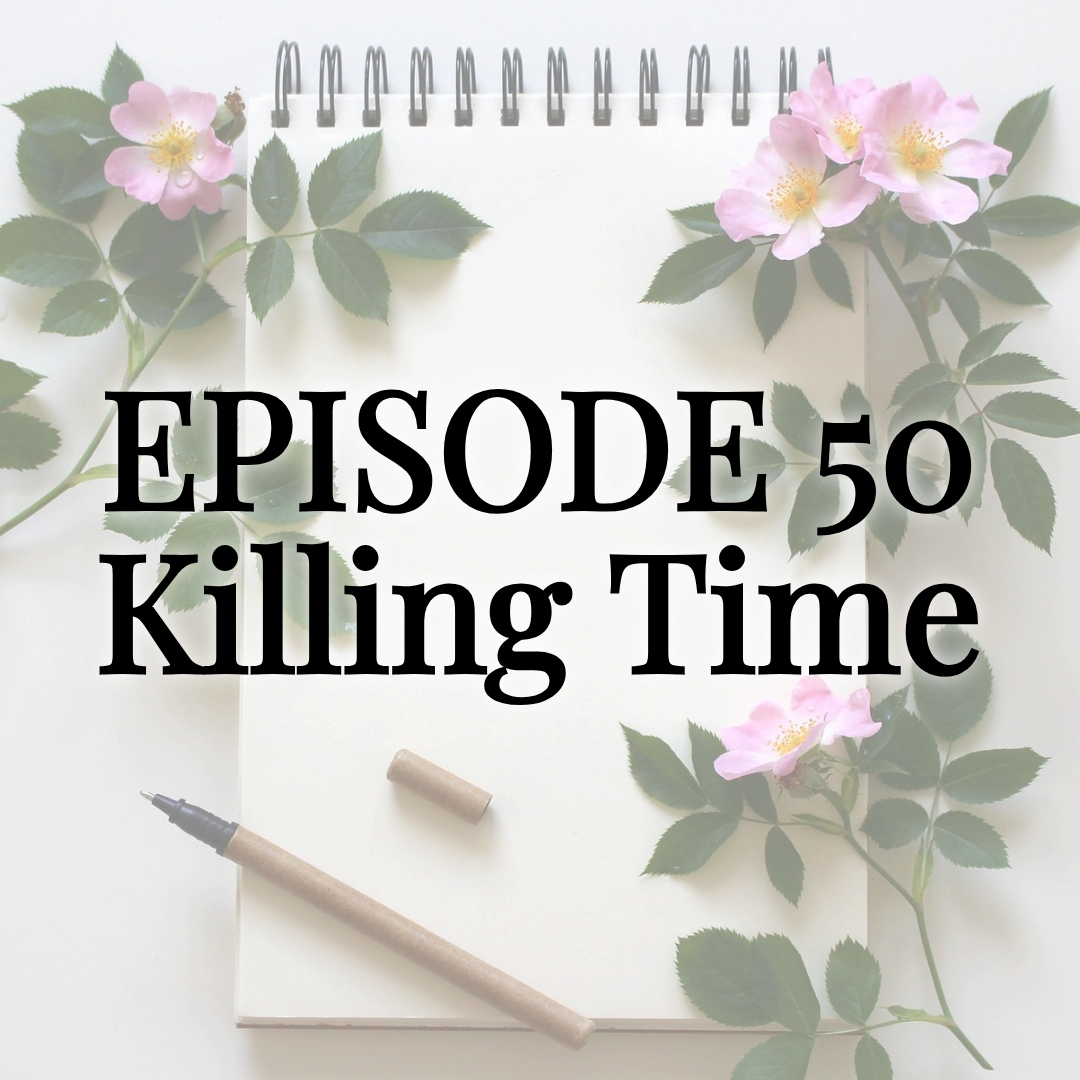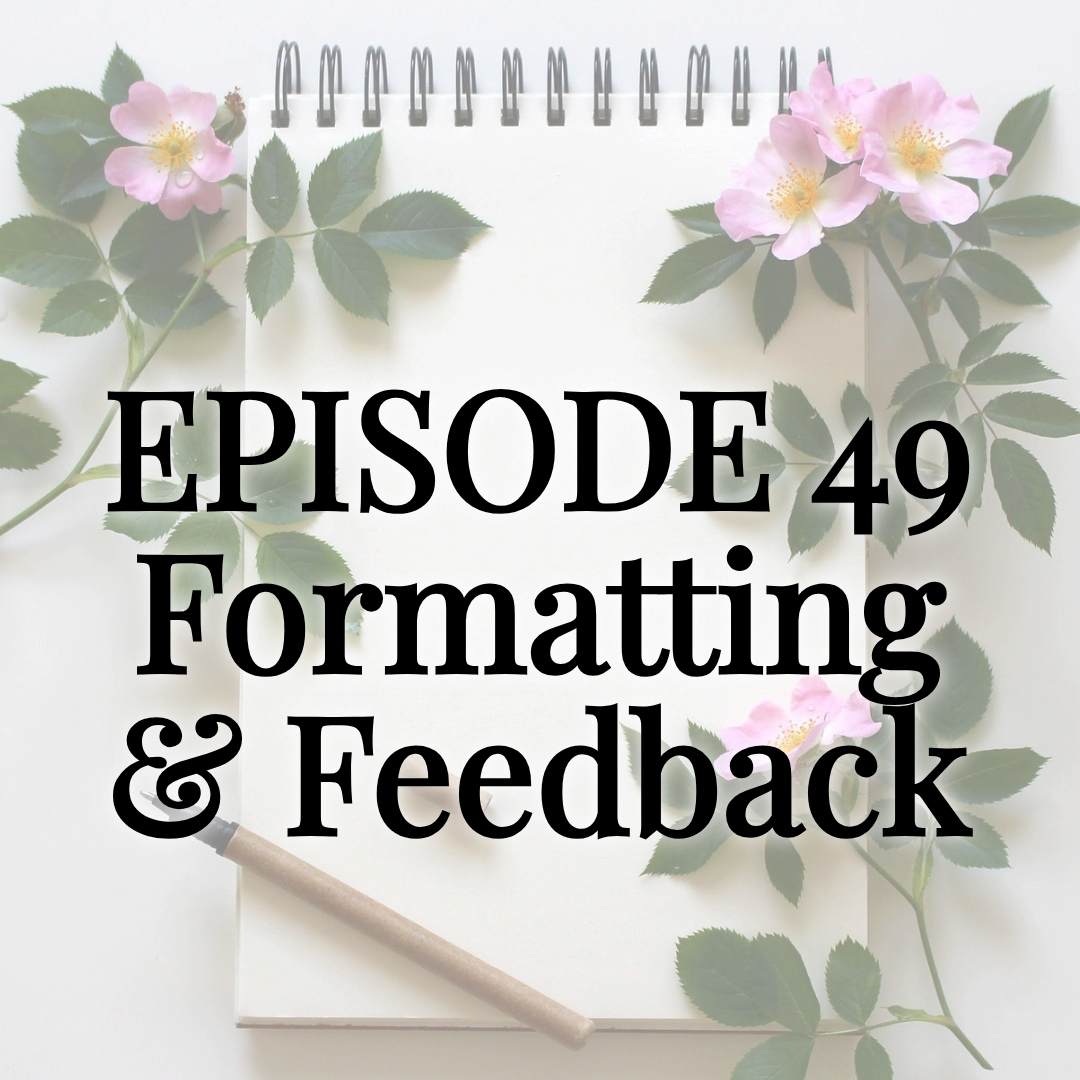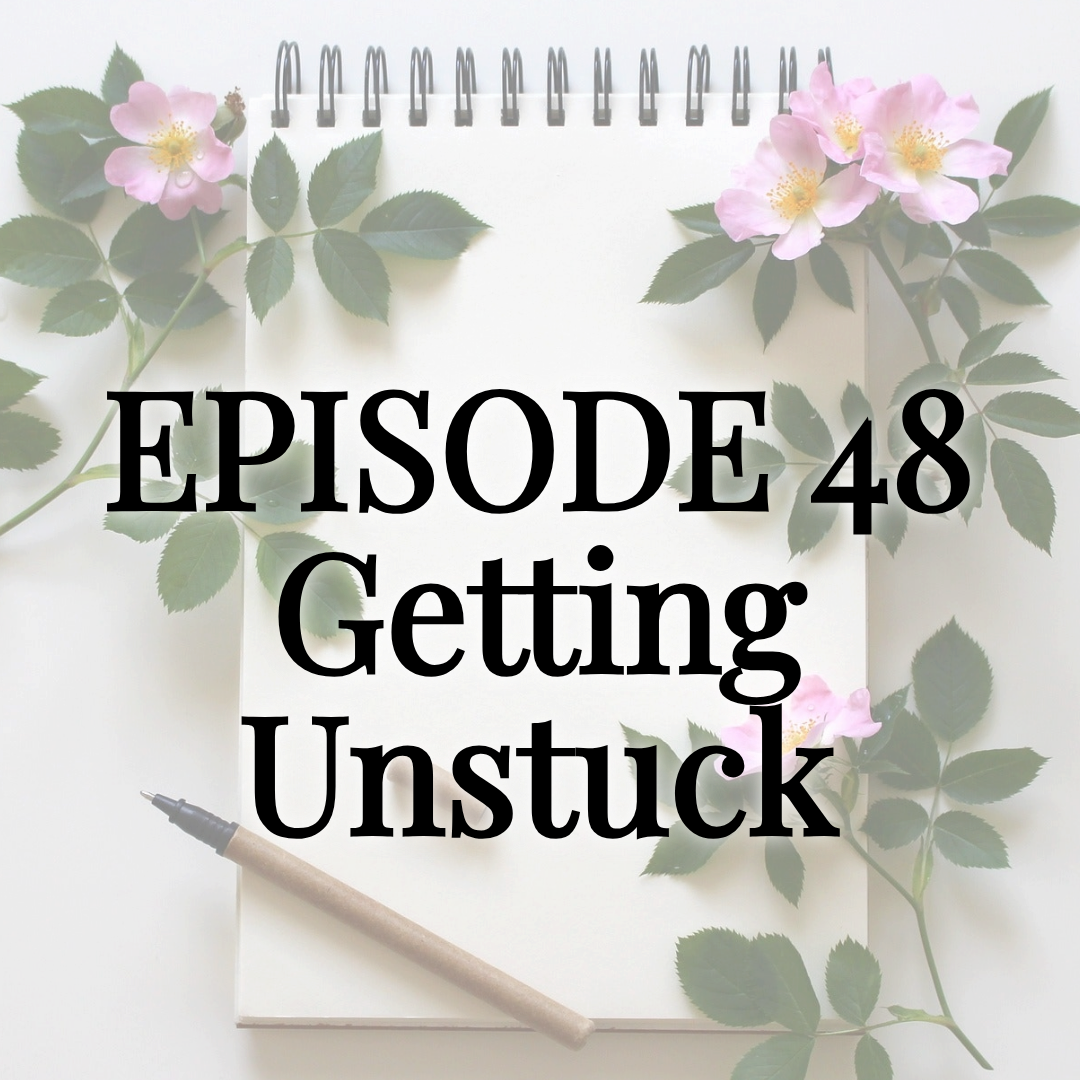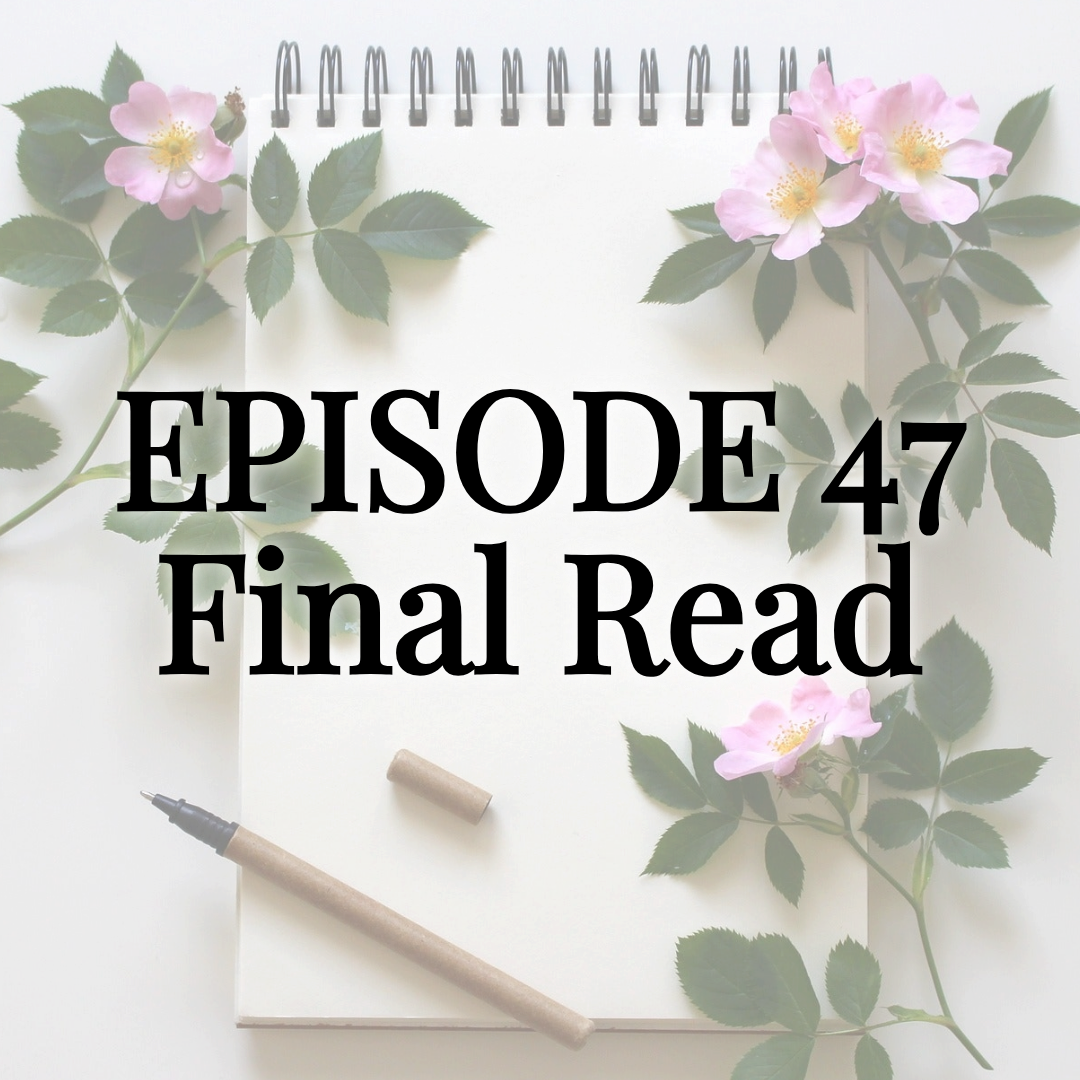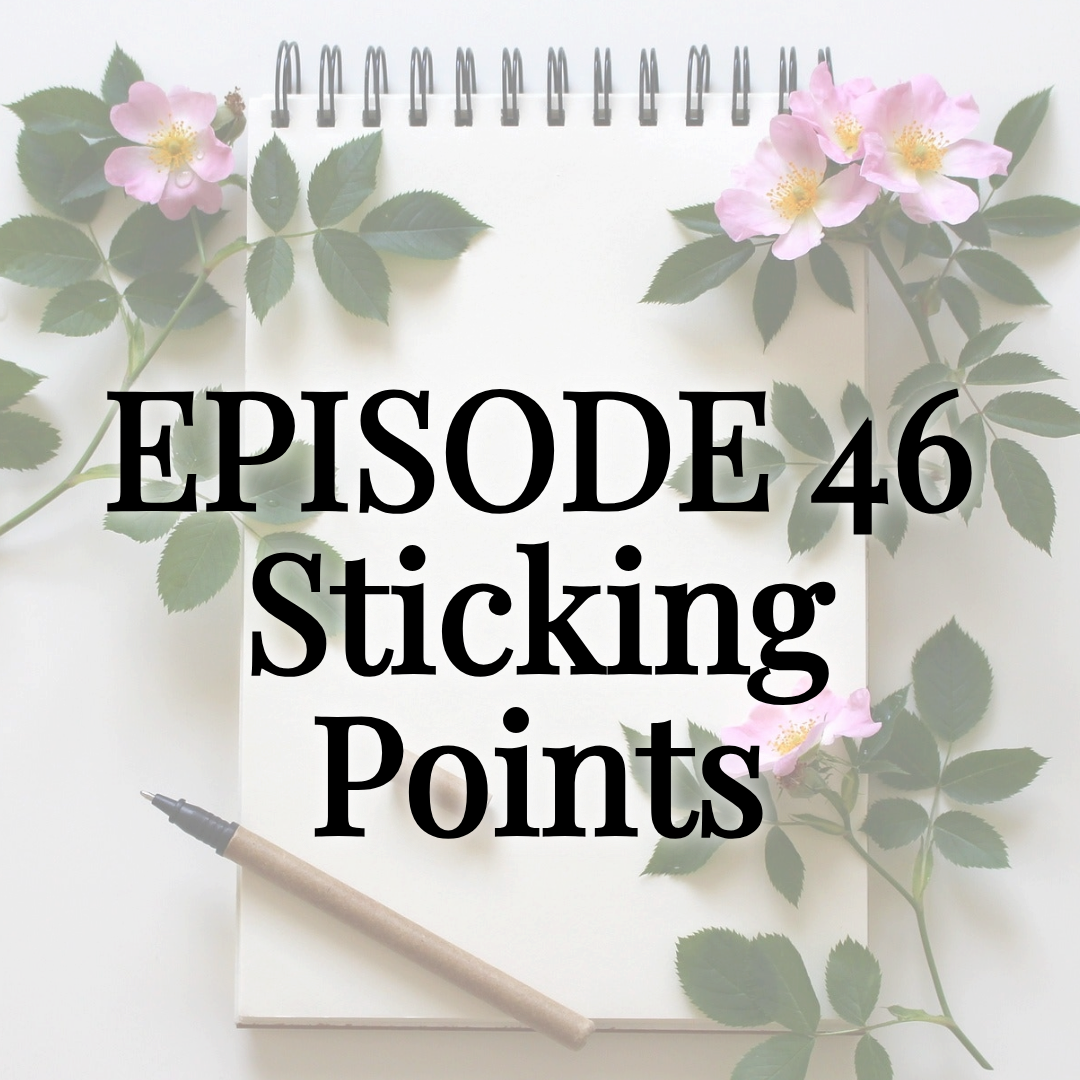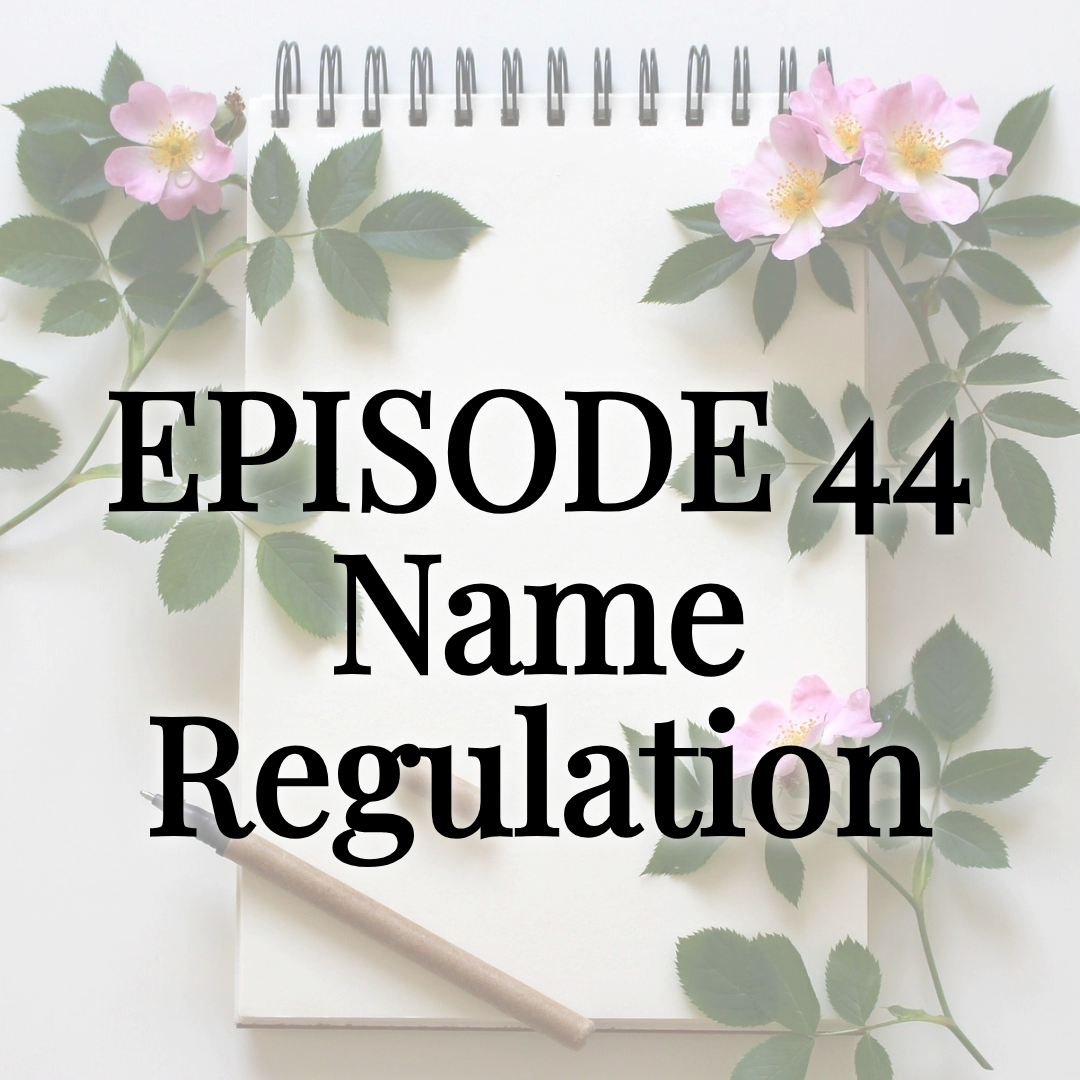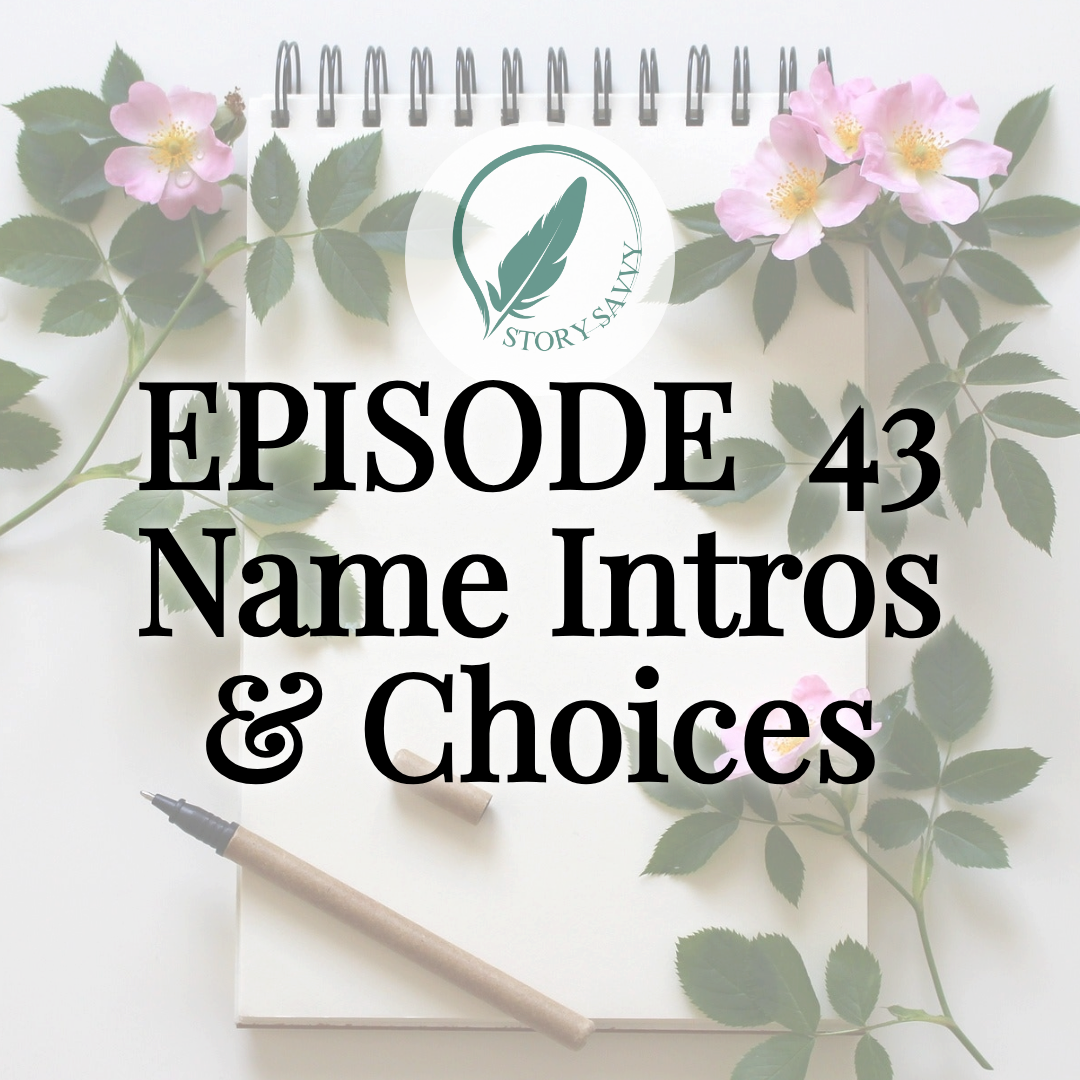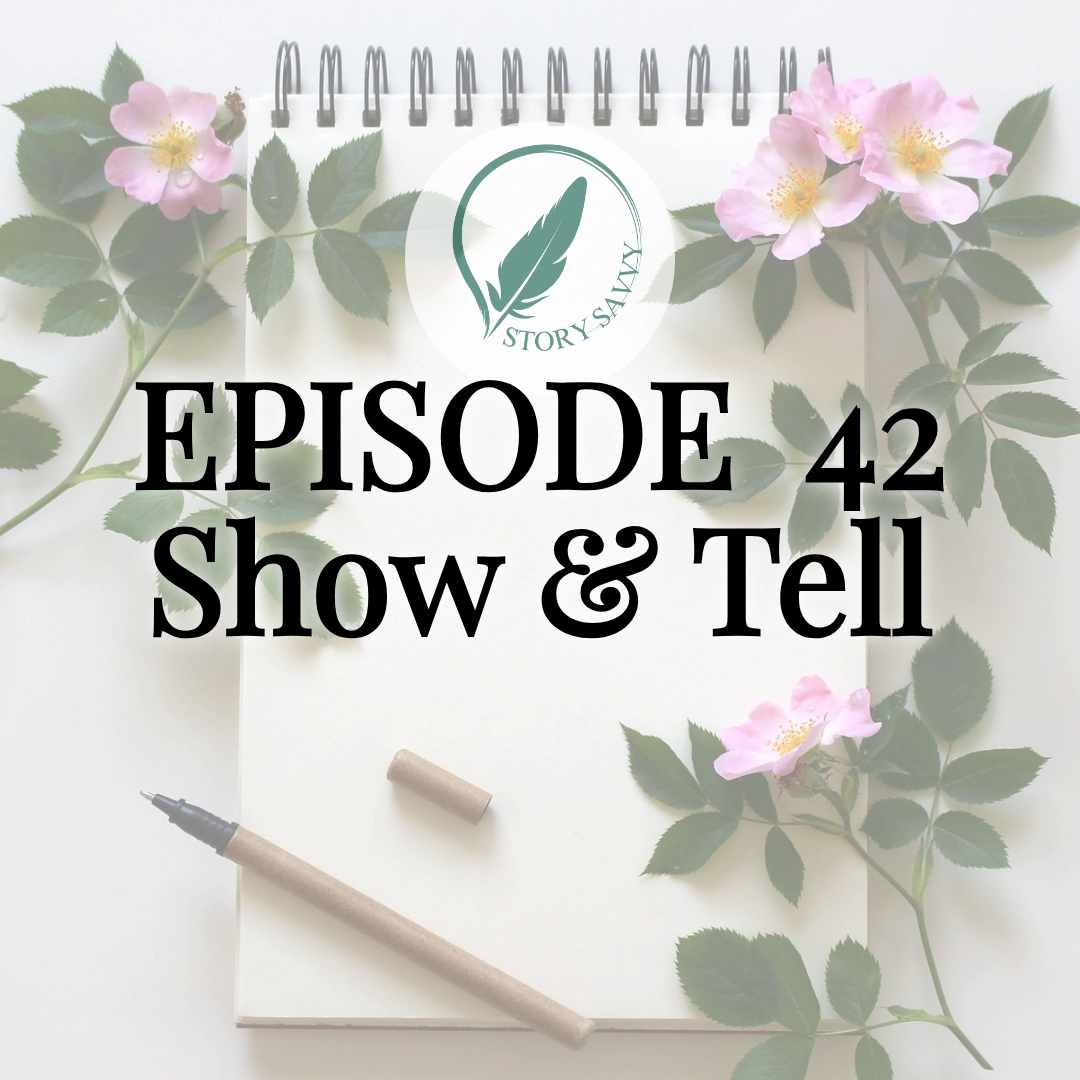Checking Your Narrative Style Choices: Story Savvy Self-Editing Episode 15
Narrative Style Choices: After-episode thoughts, overview, and transcript...
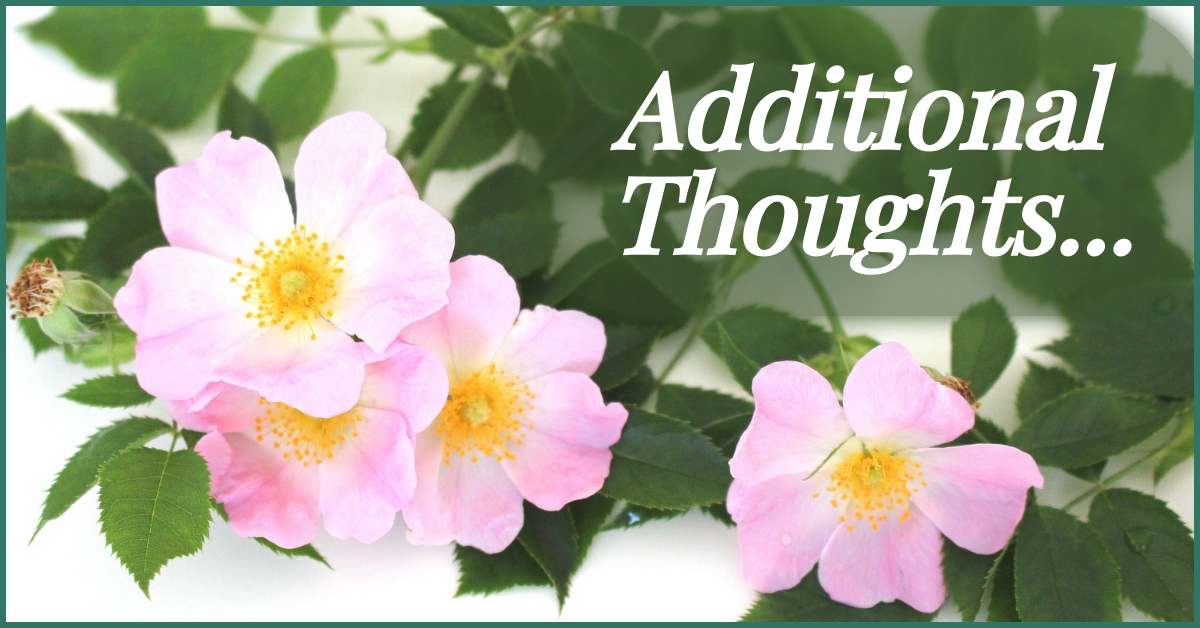
When trying out re-writing a scene to change an aspect of your narrative style choices, I forgot to clarify that I suggest doing so NOT in your working manuscript! Copy and paste out the chapter into a separate document, try re-writing it there, compare the two, and make your decision for the rest of the book from that. Whether or not you decide to change your tense, person, or POV across the whole book, always make sure to save an archive copy of the manuscript first in case you change your mind later or want to revert to old wording!
Episode 15 Overview:
Checking Your Narrative Style Choices
“Is my tense, person, POV, and POV distance all the right choices for this story and how I want to tell it? Have I considered other options, and how might I decide if I want to change one of those aspects?”
Curious about first person point of view and third person point of view? Want to know how to edit your book yourself or achieve true writer improvement? In this full-length episode of 52-Week Story Savvy, developmental editor Rebecca Hartwell and aspiring fantasy author Agnes Wolfe [authorsalcove.com] dive deep into self-editing your narrative style.
This isn’t just a grammar lesson—this is about storytelling strategy. Rebecca explores the artistic and structural choices authors face when choosing tense, POV, and narrative depth during the book revision process. They examine why consistency matters, how genre influences expectations, and when it's okay to break the rules. You'll also get advice on managing multiple POVs, avoiding head-hopping, and how to fix these issues even after you've written your full draft.
In This Episode:
~Choosing between first, second, and third person narration
~Understanding narrative depth: omniscient/distant vs close POV
~Tense choices (past vs present vs future!) and when to use them
~Tools for multi-POV balance, including the “Fibonacci method”
~How to make POV choices that serve both plot and reader connection
~Tips for revising POV/tense in later drafts (without panic!)
Whether you’re outlining your story or revising your final draft, this episode will help you shape a narrative voice that resonates with your readers and elevates your craft.
Recommended Resources:
Developmental Editing Services
Authors’ Alcove Membership Site – [http://authorsalcove.com]
Book Giveaway – [http://authorsalcove.org]
See you next week for episode 16: Momentum Through Protagonist Goal
Episode 15 Transcript:
Self-Editing Using Your Genre
Rebecca: Hello and welcome to the Hart Bound Editing Podcast. This is episode 15 of the weekly Story Savvy series where we tackle the 52 biggest self-editing topics and tips to help you make your good story great as an aspiring author asks me, a developmental editor, all of the questions that you have wanted to.
We have covered a bunch of different topics in this series so far, including last week's episode on using blurbs as a self-editing tool. Today we are going to go over some overarching elements like person, tense, and POV, point of view.
By the end of this episode, you will hopefully understand what your options are around these aspects and feel confident deciding which are the best for your story and making any changes around those that are needed. Joining me today to ask all of those questions is my friend and co-host Agnes Wolfe. Welcome.
Agnes: Hi, I'm an aspiring fantasy author who hopes to release her first middle grade fantasy later this year and also the host and founder of Authors Alcove. I'm here today to tackle our narrative style choices, which I'm super excited about.
So, what exactly is narrative style? Because I think that I think of like just point of view, is that what it is?
Rebecca: That is part of what it is. So, the narrative style is—so—POV, so whose perspective the story is being told through, it is your person choice and that would be a first-person narration second person or third person. It is tense, so whether you're telling the story in past tense, present tense, or future tense. It is also the depth of the POV, so that would be measurements like if you're writing omniscient or distant POV or close POV, so how closely you are seeing the story through your POV character's point of view at any given point.
Agnes: So, is that the same as a framing device like you mentioned in your edit letter to me?
Rebecca: It can be to some degree, but it's not directly the same thing. The framing device is more when a part of the story is used to add context to why the majority of the story is being told. This is often one character in the book trying to give advice to another, like in ‘The Name of the Rose,’ or like Shaharazad using a thousand and one stories that this character knows to keep the king from killing her in ‘Arabian Nights,’ and she is the framing device to present these other stories to the reader. Sort of “a story within a story” is one way to look at framing device.
How this connects to narrative style is that they need to be aligned in a logical way. For example, if you are using a clear framing device of someone talking about the events of that character's personal past, then you kind of need to tell that bulk of the story in past tense, but you could tell the framing scenes, so the part of the book where you're showing the reader this character telling these stories, in past or present tense.
Same with the person choice. If the storyteller in the framing device is also the protagonist of the main story, you probably need to write that story in first person so that that storyteller's voice is the one that is telling this story from that framing device. Or at a stretch, maybe second person, but second person is really rare and we'll get more into that later.
However, if the storyteller character, the framing device, isn't in the stories being told, like Shaharazad is, then you probably need to write those stories in third person because she is not talking about herself.
Agnes: So, what's the main priority when checking this particular thing in our own book? What other things are we looking at?
Rebecca: Primarily consistency. There are very few totally wrong choices apart from being all over the place with these aspects. So, making sure that you are in one set tense, POV, and person throughout is step number one. If you do nothing else, please aim for consistency.
Beyond that, you're looking at the genre viability of your choices. So, certain genres are going to have more common expectations for person, tense, and POV.
And then lastly, for the moment, we are looking at the effectiveness and impact that our style choices are having on the story being told. The same story is going to read very differently and come across very differently and have a very different presence in the world, depending on what tense and person and POV it is being told through. And that's one of the things that we're looking at.
Agnes: So, I know for myself, like I had gone, I had actually initially thought I was going to do a first person point of view from Amelia, but I realized that that was too limiting for what I wanted to write.
So, what are some of the pros and cons of different person choices like first person or third person? And how should we be checking to make sure we're making the right choice for ourselves?
Rebecca: First off, never assume that, you know, you are consistent here. I'm going to keep reiterating this. Please make sure that you are consistent across the board, especially if you do edits. But to actually answer your question, making the right person choice can come down to a myriad of things.
First of all, what comes naturally? Especially as a first-time author, this should not be something that you're obsessing over. If you naturally write in third person, write in third person. If you naturally write in first person, write in first person. After your first book, you can start experimenting, you can try different things. But what comes naturally is going to be a priority as a very new author, because getting that consistency is step one in learning the rules before you start breaking them.
The next consideration there might be your cast size. So how many different characters, and particularly POV characters, you have in the story. If you want to write in first person, for example, it makes a lot of sense to have one POV character. And like you were just saying with your own story, because you knew you needed to have less limitations than that, if you needed to have more than one perspective, switching to third person was a great choice. And these are not hard and fast rules. I have seen books that have multiple first-person POVs, but they have to be done very, very well. It is harder to do well.
Genre is obviously a consideration, like I mentioned. Look and see what books in your genre are doing as far as person goes. Make a note. Just do a tally. First, second, and third. Second is probably going to be a zero. There are almost no books written in second person for a good reason. It is very discombobulating. You can if you really want to, but I'd suggest testing it on a short story first. But first and third are 99% of the ‘persons’ out there, so I suggest sticking to one of those.
Another consideration is how distant or immersive you want your storytelling to be. One of the clearest ways to explain this is just by looking at traumatic events in stories. If you want to traumatize your readers, then first person is a better choice because that person choice is going to have your reader in the body of the person that the bad things are happening to. It is going to have them far more invested and set in that experience than third person where you are looking at these characters from the outside.
On the other side of that, if you want to write about difficult topics, but you want to do so in a healing way that isn't designed to traumatize your readers, or trigger them, or whatever you want to avoid, then making the choice to write in third person can really help in letting you tell these stories and present these difficult topics in a way that your readers will be able to consume without being hurt. Or without being disadvantaged and perhaps not wanting to finish the book because it is too close to them or their experiences.
The last consideration that I want to mention here is kind of what I touched on earlier of how traditional third person perspective is. Most stories throughout history were told in third person. It was about people outside of oneself.
First person is more of a modern choice. It's definitely—and in my spaces of paranormal romance, romantic fantasy, that kind of stuff—first person just has a more modern feel because it is a more modern way of telling stories.
And then second person is the avant-garde choice. That is, you are doing art, you are trying to be weird, you want to make people uncomfortable, and being aware of those sort, of societally, culturally understood tones of the three choices is also a consideration in deciding which is best for you and your book.
Agnes: So, one of the things that I found very interesting about a book I recently read, and it was by A.G. Howard, I think it's called… you know, I'm not sure. I've read so many of hers, but I can't remember the title of it. But it's her Phantom of the Opera version. And one thing that she did was she did first person point of view from her protagonist, and then she did third person point of view from the other character. I don't want to say which he falls on that particular spectrum. But—
Rebecca: Yeah, you absolutely can play with that. And it doesn’t have to be a split like that. For example, in my own work, I use first person perspective only for when people are seeing visions. But again, consistency matters. So, I had to go through and make sure that okay, if it's not a vision, it's only in third person and vice versa.
So, you can make interesting choices like that. It's definitely not standard. But yeah, it's definitely one of the things that you can play with. And I'm glad you brought that up.
Agnes: And so, from what I'm hearing, consistency, you just got to make sure that when whose head you're in is what perspective you’re in and all of that. So, what should we know about like past, present, future options in a self-editing stage? Do people use future? I can't think of a book that uses future.
Rebecca: I personally have never read one, but it is an option. You could tell this story. In fact, at some point, just for fun, I want to try writing a future tense second person short story just to see how weird it would be!
But anyway, so a lot of the considerations around your tense choice are the same as around your person choice.
-What comes naturally, especially as a first-time author.
-Understanding what is more commonly paired together than other combinations. For example, present tense is much more acceptable in first person than in third. So if you know for a fact that you're writing in third person, writing in present tense is a riskier choice than if you're writing in first person.
-Genre. Again, do a tally, see what people are saying about it, see what your readers are most likely to connect with. This one very much ties back into that framing device connection that we were talking about and making sure that whatever tense you're writing in makes sense with the framing device and isn't going to really, really throw people off.
-Again, how distant or immersive you want it to be. Third person has—sorry, we're talking about tense now—past tense gives a little bit more distance because this is something that has already happened and just the use of past tense language can give it just a thin layer of knowing, “all right, the conclusion has already happened in some subconscious sense, so I've got a little bit more comfort about how this is going to turn out.” Whereas present tense—partly because it is less common and partly because it's just inherent in the storytelling—can feel much more in the moment and like things are undecided and you don't know which direction things are going to go.
-And then lastly, again, traditional, modern, or “out there.” So past tense—yeah, that's what we're talking about now—past tense is the traditional. Most mythologies are told like that, most early novels are told like that. Present tense is the modern one, the one that feels kind of edgy and a little bit more now. And then future tense, like you said, is very rare and if you were to write in that it would throw people for a loop, so it's definitely the "I'm going to be weird and avant-garde and artistic" option.
Agnes: Which I have to admit, I tend to like the really weird, like I love the people who are just a little bit unhinged when they write. Those—
Rebecca: That came up a couple episodes ago, yeah.
Agnes: I like people who are just a little unhinged. I wish that I was a little bit more unhinged like that, but like I couldn't pull it off.
But I know like one of the things that I struggled with when I was writing is I actually just had decided originally I was going to write in present tense, but I realized as a writer I can't do it.
Because like I would start and then I would switch tenses. I would be—I would get into the thing and then it was like I would switch tenses and I'm like I just can't do it because I know that I will flip-flop and I won't stay consistent. And that goes back to that consistency thing.
Rebecca: Yeah, and that's a totally valid reason to make a style choice. It doesn't have to be deeper than that.
Agnes: So how can we tell how deep our point of view style is and if it's right for our book? Like I know knowing our audience—I feel like I keep saying that like you keep pointing back to knowing our audience.
I think with middle grade, because middle grade is so much different than other fantasies in that there's things you can get away with and there's also things that you should not—you should stay away from. But so like, do you mind just expounding on that?
Rebecca: Sure. So how you tell what depth you are already writing—because we're assuming that you're self-editing at this stage—there are some definitions for the different depths that I'll touch on today—and I'm not going to cover all of them but I'm going to touch on the three most common that I see.
So, the most distant is omniscient and that is very much from the perspective of, you know, God up in the clouds just looking down and—or like a movie. If a movie doesn't have sort of internal thoughts, or you're never seeing through the protagonist—most movies are omniscient where the POV is outside of any of the characters that exist on the stage, and that is very, very distant. Everything is at arm's length. The limitations on that and why it's very—I will say very—it is less common than it used to be, and it is frequently frowned on nowadays in particularly the fantasy spaces, is you cannot show thoughts in omniscient for the most part. All of these rules are very loose rules. You can if you want to, but if you're a new author, new writer, I recommend not doing so.
Sort of the middle ground would be just a distant POV where—and I hope you don't mind me saying this—I think that's where your writing was when I was doing the editing on your book, where you do have one character that you are in their POV for any given scene. So, it is through their eyes or their emotions that you're viewing it, but you're not doing terribly much with that. You're not really getting into their thoughts or their emotions that often and that's sort of this middle ground and that's a totally valid choice.
The most common that I see in successful works, and particularly in the fantasy genre, is close POV, and that's where the descriptions in any given chapter are very much like the narration is coming from within that person in every sense. You are smelling the smells that they are smelling and it's connecting to that character's memories. You are moving in the way that that character moves. You are hearing their internal dialogue and their thoughts, and all of this kind of stuff, and you are very much in their experience.
And a lot of the time when I'm helping authors that I'm working with fix up, or clarify, or strengthen their POV distance it’s often trying to help them get into that closer or tighter POV distance.
So, moving on from the definitions. So that's how you can decide what you already have in place here. I think that there is a more specific list of considerations for deciding whether or not it's the right choice than with the other ones.
First and foremost is genre. Absolutely. The others—like, genre is a consideration—for this one genre dictates what you should be doing. For example, if you're writing epic high fantasy with many, many POVs—for example Game of Thrones or something like that—omniscient might be the right choice for you because that is going to give you a lot more space.
Whereas in paranormal romance or romantic fantasy, fantasy romance—close is pretty much a mandate of the genre. You kind of have to be writing in close distance POV for it to connect with the readers of that genre and those subgenres.
How distant or immersive is the second biggest consideration here, which we've touched on with the others. But more specifically here, with how much of the story value is internal or external. For example, if you are wanting to present themes of self-discovery or disillusionment or romance—or anything like that that is so internal to the main character—you probably need a relatively close POV to really deliver that to your readers.
However, in a book where it's just, you know, tons of mystery and intrigue and action that is pulling things forward like James Bond, then a more distant POV is not only much more acceptable but possibly the right choice, a good idea for it.
And then lastly for specifically this POV distance: how many POVs you want to present in the story is worth considering—which I touched on with the first one, but I'll go into depth here.
It's not a straight formula. It would be very convenient if it was, but it isn't. For example, for a certain kind of writer, writing a certain kind of book, with five POV protagonists, let's say, then using a close POV might be the right choice to help them quickly establish which POV each scene is in and to use that large cast to its fullest potential to get that diversity of internal plot fully into the mix.
However, for a different writer and a different book, a fully distant omniscient POV might be the right choice for following five different POV protagonists, as that will allow the reader to really consume the story like it's a movie—so a fully shown experience without getting bogged down or confused by that many internal told aspects and storylines.
Agnes: So, I know in my own work—and I didn't prepare you for this question—so I know in my own work that I had personally like—I know that I want to get more into my character's heads. So, I want to get it more close because I want it to be a little bit more personal. So like, I had started off with more distant and I realized I wanted to work towards more close.
Well, what about the opposite person? When would they realize okay, I am doing close but maybe I need to back up a little bit? When would they might feel that? Like for me like I knew I want to get closer because I want more feeling and I want my characters to be a little bit more likable and all of that. When would you want to back away?
Rebecca: I think that assessing what the value of your story is and if you're doing too much plotting can definitely be two of the major, sort of, markers for this.
So in the first one—I love using James Bond as an example because it's an outlier from a lot of the genre work that I work on—in his movies, his books, whatever, the value of the story is not him going on some internal journey to become a better person or, you know, become disillusioned with stuff. And there's slight elements of that. But the value of those stories is action. The value of those stories is shooting the bad guys and flirting with the pretty ladies and traveling to exotic locations. None of those are internal. None of those happen inside James Bond's head or heart or soul.
So if you're looking at your story and you're like, "All right, I'm writing a thriller," or "I'm writing a police procedural mystery" or a horror or something where the value is almost entirely outside of the protagonist—but they are still a part of that story—then that might be a good clue to back off that distance of your POV and let those aspects that the story is actually about have more space to be what they are and be shown without that muddling and that middleman of that internal work.
On the second point that I made there—I have read a couple of books and edited a couple of books where the POV was too close because the author was trying to do too much with it. And what it ended up being was instead of things happening, it was just so much internal thought and so much of the character thinking back and having flashbacks and waffling about their emotions.
And the problem there is that readers only care about that if they're given a reason to. And the reasons are almost always action. It's almost always something unexpected happening or forcing the protagonist to take an action or a revelation that makes the protagonist need to go do something. And none of those come from inside—or at least they shouldn't—in good work, for the most part. Literary is a bit of an exception.
So, in those cases, I would suggest backing off simply so that the author doesn't have the option to get bogged down in the ways that they are naturally prone to do.
If you are opening a book with pages or chapters of mostly thoughts and memories and personality building and considerations, and anything that's inside and not happening, then that can also be a great indicator of—"hey, I need to back off so that I am taking all of this fluff and shoe leather and purple prose and overwriting out just by saying I don't get to show thoughts. I don't get to show what is happening in their head. I don't get to tell the reader what is happening in their head. I don't get to tell the emotions—I have to show.”
So, a lot of that like over telling and rather than showing can be another great indicator and good reason to back that POV off.
Agnes: So the next question I'm going to ask is about how many point of views, and just to give context is like I know with my own I had looked it up because I was debating on going with one or two originally because I had started off with one and then I decided to go to two, but then—you know my story of how I ended up with a third.
And I had found that middle grade usually does one or two, so I knew I was taking a risky choice with the third, which is why I actually—I went back and forth whether I was going to go through another round of edits. I had done like one and a half edits before I sent it to you, but like I was like “do I change this?”
And my husband was like, “No, let's hear what she has to say,” and I'm so glad I did it that way because you helped me kind of refine—like I do actually—I am going to have a total of three point of views, but the third one is only in very select circumstances.
So, I know that's a long way to ask—so are there guidelines surrounding how many point of views and how much does it—does our audience dictate that?
Rebecca: Yes and no to the first question. There's no one right answer for any genre that I can think of off the top of my head, but not all choices are acceptable in all genres.
For example, like I was talking about, romantic fantasy kind of has to be one or two. You can kind of get away with three? But stories like a classic, you know, crime noir has to have one. You really only ever see one perspective in those.
But you can get away with more—but I'm just—I'm reiterating myself at that point, so moving on.
In first person, for example, one POV is the strongest standard, which I definitely mentioned earlier. So, what your person choices are can dictate how many POVs you get to get away with.
Going back to genre—in romance, and particularly paranormal romance or romantic fantasy—dual POV is at least as common as one POV these days, from what I've been seeing. And that's a great choice because then you get both sides of this romantic connection.
If there are going to be multiple POVs and it isn't a romance, then the protagonist and villain are often the two options that I see for that, where you use the villain as a far less common, less frequent POV to show the reader things that you're not ready for the protagonist to know.
And this is a great and authentic way to build some of that mystery, that intrigue of—oh no, I now know that the villain is building a giant world-destroying laser, but the protagonist doesn't know that yet and I can't tell them.
So, it's also—it's not just deciding how many POVs you have in a story but which ones are important. And that was part of the conversation that you and I had, was I very much agreed that your third POV had a couple of things that neither of your protagonists were in a position to know—they weren't in the room, they weren't in the city at the time—but it was important for the reader to know them, which heavily justified that third POV existing to show that stuff and fill in background information and create that intrigue.
So, the next consideration there that I want to mention is fantasy, which is what we're mostly talking about here, is by far the most accepting of many POVs. But do be wary of going overboard, and I strongly recommend centering one protagonist and their storyline more than the others. Ideally, this would be whichever protagonist that you are doing a POV on will be the strongest when these storylines all merge, or theoretically if they were all to do so.
One of the issues that I've seen in some of the large-cast—so, four-plus POV protagonists—fantasy that I've edited is I'm never sure which character I'm actually investing in because I'm not going to invest fully emotionally in four characters in one book. That's just not going to happen.
So having one—and I've seen this done very well—where—it's usually the first one that's presented, and it's usually one that—you mentioned Save the Cat, I think it was in the last episode—that's a great indicator. Like “hey, this person is, you know, doing—they're saving the cat, metaphorically. So I'm going to invest in them, and these other storylines I'm going to then trust are all building into that primary storyline, even if each of those other storylines has their own sort of protagonists.” Just a consideration there. It's not my favorite, but I have seen it done well with many, many protagonists.
When in doubt, try to reduce the number of POVs you have. And if you are writing dual POV, try to keep a roughly even balance between the two in how many scenes each of those two get, how often they get those scenes, and, if there's an imbalance—that the character who is the stronger of the two protagonists—who your reader is more likely to connect with—has the majority.
And a lot of the genres that I work in, you know your audience is mostly going to be female, so centering your female main character over the male main character tends to make a lot of sense as far as divvying up those POV opportunities.
Agnes: So one of the things that I would love for you to expound on that I did not put in the question—I feel like I'm adding a lot of questions this week—one of the things that I tried to do at first because I thought I had to do it, and it actually was a detriment to my story, was I felt like I had to keep all three of my POV characters equal, and you helped me realize no, that third one does not need to.
But now that I am going to have two, my two main characters, they are going to be both the protagonists. And I realized—because I realized, you know, that's actually where my audience that I am targeting is used to having like, you know, Fablehaven, you know, different ones.
And I realized that I also wanted to not just target just females, I wanted to target both. So how do we know when there can be an imbalance, and when there needs to be a balance?
Rebecca: I think your use of the word ‘protagonists’ there kind of answers your own question. If you have two or more protagonists, then I would suggest keeping them as close to balance as you can.
However, if you're using a secondary character or a villain as an additional POV, it is more sort of generally acceptable for them to have a much smaller role.
I have seen a theory that I haven't actually tested that much, but it was interesting: You can also try balancing your POVs like a Fibonacci sequence. So, if you can picture that sort of seashell shape that starts large and gets proportionally smaller as it spirals down in, you can try balancing your POVs like that—where your primary protagonist, if you have dual POV, like in your book, Amelia is going to have that first part of the Fibonacci sequence. She's going to have that large of a chunk. And then your secondary is going to have that next decreasing amount—that's going to be Julian—and then that third amount, all by these nice—what’s the word I’m looking for? Balanced and proportional percentages—I guess that’ll work—you go from important down to least important in these. They're not equal, but it's also not like you're writing a whole book with one scene in a different POV—which I've actually done—but I was not a very good writer then. Or at least I didn’t know the rules around this, and I had one scene that needed to come from a third perspective, and I couldn’t find a way around it.
So, if you need to do exceptions like that, you can, but make sure that the reader is never going to have any question of, “Oh, that wasn’t necessary. They could have just told it from the protagonist’s point of view. Why did they bring in this third one?”
As long as those rules and those rough percentages are given some thought to, you should be fine.
Agnes: So, I do know that if we're in one scene, we do need to keep the same point of view. Otherwise, it's head-hopping. How consistent should we be as far as chapters? Are there rules surrounding that or anything like that?
Rebecca: Yeah. So, the short answer is just staying consistent in a POV by scene is fine, but there are more things to consider around this.
First of all, if you are going to have multiple POVs in a chapter, you must use scene breaks between the POVs. So, where that POV changes from one to another, you have to use a scene break there.
And the standard formatting for that is three asterisks, center-aligned on their own line. But pretty much anything—like hash, pound signs, whatever you want to do—as a scene break to make it clear something is changing, something is shifting, so the reader will be mentally prepared to step into a new POV on the other side of that break.
Another consideration is, I suggest that you avoid shifting POVs with a scene or chapter break in the middle of things—so in the middle of action. In those moments, the reader is most locked in, and they’re going to be locked into whatever POV was building up to those important moments. And if you try to do a POV shift there, especially if you try to do this often, it's going to feel like what we talked about—I think it was the last episode, maybe the one before—where you don’t want to do too many chapter breaks on those cliffhangers, because it can feel inauthentic. It can feel like you're trying to manipulate the reader in a way that might not feel great to them. So yeah, where the reader's invested in what's happening, you don't generally want to do a POV shift.
The exception can be the climax. If your thing that's happening is, you know, chapters long at that high point in the climax, it is far more acceptable to go back and forth or hit a bunch of different POVs to all show this biggest event of the whole book from different perspectives.
The next consideration I wanted to touch on here is if you are going to do POV scene breaks anywhere—so multiple POVs within a chapter broken by scene breaks—make sure that you have enough of these throughout, and one early in the book enough, that it becomes an established pattern of that book rather than a one-off outlier. As that outlier is more likely to feel jarring to the reader and come across as perhaps amateur as a writer.
The last point I’m going to make here is when the POV isn’t consistent within a scene or a chapter or anything, and there isn’t a marker—there isn’t a dividing line—that’s often called head-hopping, which I’m guessing most of our listeners have heard at least in passing if they’re getting into writing, if they’re getting into authorship and self-editing.
Head-hopping is where it feels to the reader consuming the story like they are hopping from being inside one character’s head into someone else’s and seeing through one person’s eyes and then without warning, without—what’s the word I’m looking for—like handling that transition—they’re seeing it through someone else’s eyes and it can take them a while to figure out whose and why. And it can just be very jarring and change the experience of that story.
This is one of the most common issues that I see in all of the new authors I have ever edited for—it’s head-hopping. So, this is definitely something to check on your own—if you're making a short list of things from this series to do, this should be on your short list of making sure that you're not head-hopping—but it's hard to see in your own work, especially if you're a new author. So I recommend if you think you have any issues around this, mentioning that to your alpha readers or your beta readers or your editors or whoever is giving it a look and just mentioning, "Hey, I need a little extra help with this—can you flag it for me please?"
Agnes: So, I know like when I was editing my own work, and I had started with first person and then I changed to third person, I was only like, you know, a couple chapters in—and plus I think all of those chapters got deleted and are not in the final thing so it didn’t really matter.
And then when I went from—I was like, I want to make it active so I’m going to do present—and I realized that I’m just not capable of doing that. And so, like, it was again only like three or four chapters before I realized, “okay this is not going to work because I can’t stay in present tense.”
What if you get to the end of your work and you realize, “oh, I want to change the point of view” or “I want to change the tense” or any of these other things. That’s a lot of work. What are your thoughts on that?
Rebecca: First of all, I want to acknowledge that yes—that is a lot of work and a very daunting prospect if you come to that realization.
So, what I recommend for folks who are thinking that maybe they made the wrong choices and they need to go back and change that—test it by rewriting just the first chapter first. Before you even commit to it or decide for sure you want to do it, just try rewriting your first chapter—maybe your favorite chapter from your climax—just try rewriting those into what you think is going to be the right choice.
And maybe experiment. Try it in second person, try it in future tense, try it in something weird, just to get a sense for how that would change how that scene comes across. And that can help you measure whether or not you want to go ahead with doing all of it.
My second piece of advice here is do only one layer of those changes at a time. So, let's say you drafted the book in first person, present tense because that was the vogue thing the week you started writing it and that was the last book you read and you're like, “Yeah, I'm going to do it!” And then you get to the end, and you decide, “No, I want to do third person past tense because that’s more commonly acceptable,” or whatever.
I suggest that you don't try to fix both at the same time. And if you want to change who the POV protagonist is at the same time—definitely don’t do all three. Do one at a time. First go through and edit whatever you think is going to be biggest. So if you're changing all three aspects—let's say, let's add in you also want to make it a closer POV. We'll do all four layers here.
My recommendation is that you first change who the POV is—so whose eyes you're seeing it through—and you do that beginning to end. And then you go back, and you just get deeper into their head. You zoom that POV in to be a much closer, tighter POV and you do that beginning to end. And then you just do the tense. And then you just do the person. Because if you're trying to do all of these, you're just trying to hold too many different filters in your mind and you're going to get a cleaner result if you just do it one layer at a time.
Having said that—use outside eyes to check that you got it right. Because this is massive, and it's going to be really hard to catch your changes because your brain wrote it in first person, for example. So, when your brain reads it in first person, it's going to have a harder time flagging it as wrong because it consumed it as first person so many times already. Outside perspectives—be that alpha readers, beta readers, editors—absolutely vital in doing this.
And then the last piece of advice that I'll give on this particular topic is: you can possibly try the trick of reading a book backwards paragraph by paragraph, starting at the last one, to help check these changes without the part of your brain that wrote it the first way the first time getting in the way nearly as much.
Agnes: So, I do know we need to wrap up, but I do want to ask one last question.
What are some things we should consider when checking that we are using the right POV—as in, telling the story or a specific scene through the right character's perspective?
Rebecca: We've touched on this here and there throughout the series leading up to this point, but here's sort of a recap checklist.
-Is the POV character the one with the most agency in the book, the chapter, or the scene?
-Is the POV character the one with the most at stake?
-Is the POV character the one the reader is most likely to relate to, or like the most?
-Is the POV character the one who deals with the biggest emotions or revelations in a scene? I know that that's something that I pointed out in some of your scenes in your book.
If your answer is no to any of those—either looking at the whole book or a specific scene—then you might want to consider if changing the POV or shifting things to make the answer “ye”s to the question is worth tackling.
So, to try to reiterate and clarify that: if, for example—just one of these questions—if your POV character for chapter five is not the person with the most at stake, then your options are either change the POV to whoever does have the most at stake in that scene, or take things in that scene and rearrange them so that the answer is now “yes,” so that the POV you are currently using is now the person with the most at stake, so that those things are more in alignment and that is the right POV for that scene.
I will also just add one more thing with this. So, with more than one POV, it's extra important to make sure that you are only showing a scene through a secondary character's POV if the protagonist isn't available to see through their eyes—which I know I touched on earlier, but it's really important. I know this came up in your work, and this was one of the things that sounded like you were very positively interested in changing in the rewrites and in our debrief.
I just want to reiterate that if your protagonist for the whole story—so looking at the global plot—is in the room, then they should probably be the POV, if that’s an option. And if they aren’t, you really have to ask yourself why and make sure, first of all, that whoever is the POV can answer yes to that list of questions that I gave—like do they have the most at stake, do they have the most agency—and if the protagonist for the global story isn’t the one with the most agency or the most at stake, you kind of need to back up another layer and ask yourself, “Am I sure that they are the protagonist for the global story?”
If you're in a position where a secondary character has a POV, definitely take a very deep look at that and make sure that it's not a symptom of a bigger issue.
Agnes: I just want to thank you so much. I feel like I learned a lot today, and I feel like this is what we've talked about a lot even behind the scenes. And so, it's kind of funny—like I could have probably continued to ask questions, but we do have a limited time. So, thank you very much. I really appreciate it.
Rebecca: Happy to. And yeah, it’s fun doing these and I love it when you have unexpected questions for me—it makes me think on my feet here.
For the moment, I would like to thank everyone who is following along with this series on YouTube or Spotify or wherever else you're listening to it. We would really appreciate it if you could help us out by liking and subscribing to the Hart Bound Editing Podcast and the Authors' Alcove Podcast, where you can find lots more content for fantasy authors and editors beyond this joint series.
If you haven't already, I also recommend that you check out the Authors' Alcove community on Patreon and their new membership site at authorsalcove.com.
Thank you so much for listening to the Hart Bound Editing Podcast. I look forward to bringing you more content to help you make your good story great—so it can change lives and change your world. Follow along to hear more or visit my website linked in the description to learn how I can help you and your story to flourish.
See you next time!
